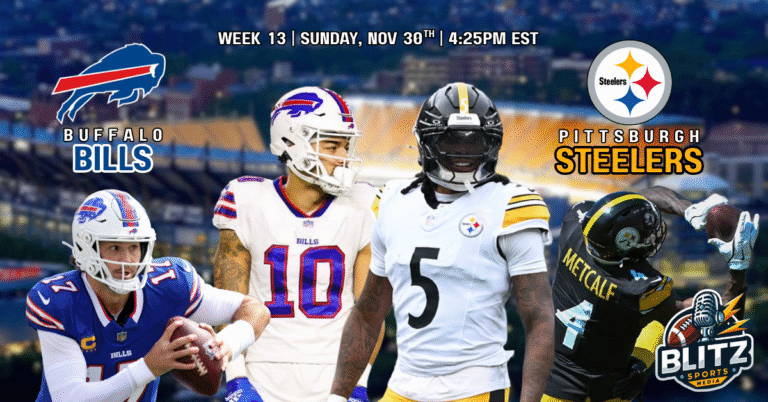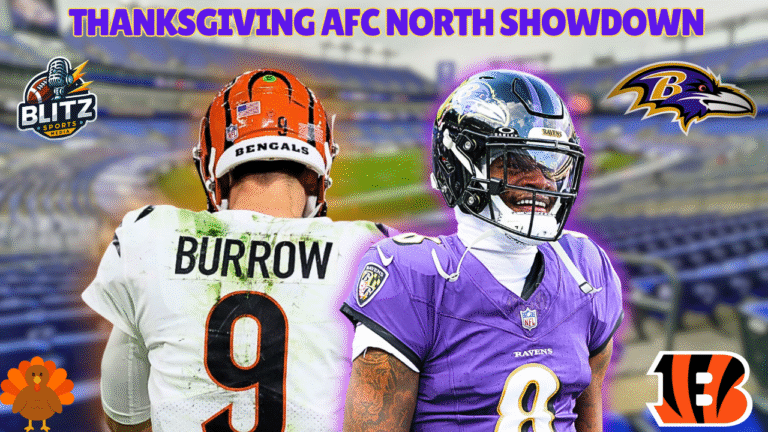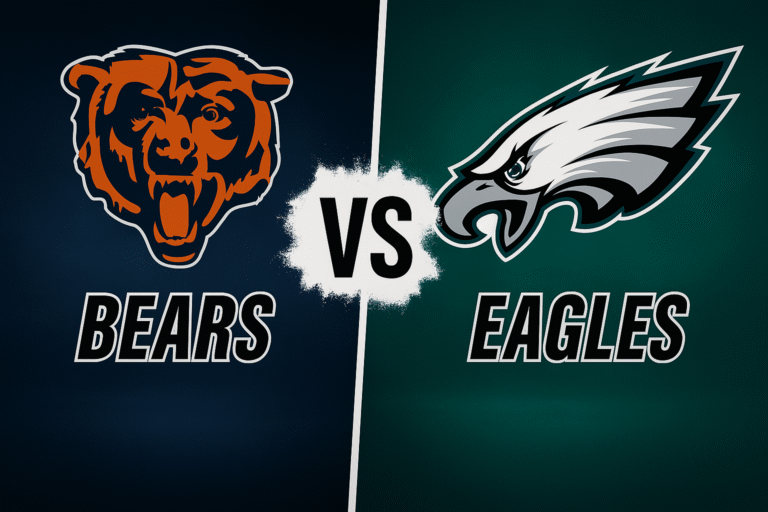The controversy that comes with the “Tush Push” has surged into conversation once again. On one hand it’s simply a quarterback sneak (with a little help from my friends). On the other hand… it’s a classic case of the unintended consequences resulting from choices made by the NFL decades ago. At the heart of “Tush Push” controversy is the evolution of a century-old rule, amplified by cutting-edge camera technology — and it’s changing how we think about football.
Deeper Look
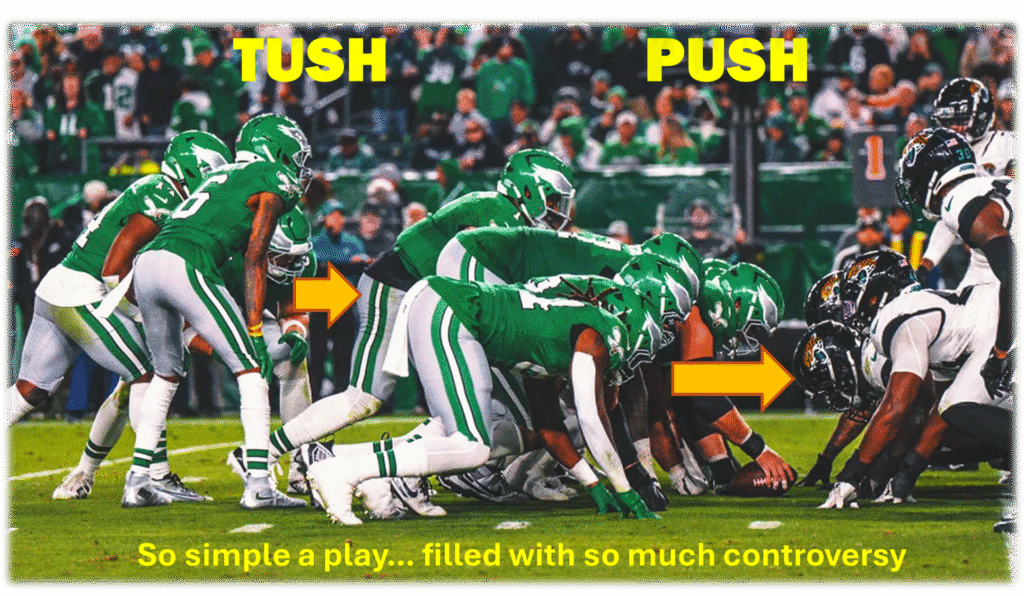
A Century of “Not Helping the Runner”
The Rule – since 1920 the NFL rulebook explicitly prohibited “helping the runner.”
- Players could not push, pull, or otherwise assist their ball-carrier after forward progress was stopped.
- They were allowed to block defenders but could not drag or push the runner forward.
- It was part of the NFL’s attempt to distinguish itself from old “mass momentum” rugby-style plays (like the infamous flying wedge) that were considered unsafe.
- The rule stayed that way from 1920–2005.
Change for the Better (mostly)
In 2006 the NFL chose to change the rules and allow “helping the runner.” This wasn’t about bringing back rugby-style plays… it was meant to simplify officiating and clean up the rulebook.
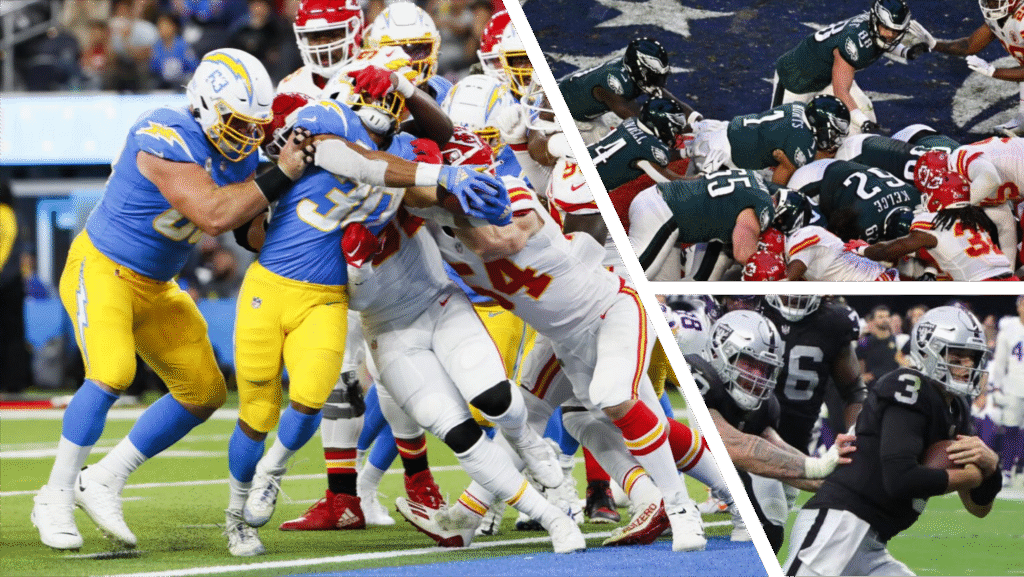
1. The rule was rarely enforced:
- By the 1990s and early 2000s, officials rarely threw flags for “helping the runner.”
- In pile-ups and QB sneaks, it was extremely difficult to tell the difference between throwing a blocking into the pile, from giving the runner a helpful shove up-field.
- This created gray areas that slowed down officiating and led to inconsistent calls.
2. NFL Competition Committee review:
- The Competition Committee reviewed rules that were considered “dead letters.” They were in the rulebook but almost never enforced.
- “Helping the runner” was at the top of that list.
3. Focus on safety and clarity:
- Unlike the old “flying wedge,” simply pushing a runner forward wasn’t viewed as dangerous.
- Safety concerns dealt mainly with formations and blindside hits, not an extra shove.
- So the NFL kept the ban on pulling a runner but legalized pushing.
We’ve all seen linemen crashing into a crowd of tacklers with the intention of jarring the heap forward to help their runner fall for a few more yards. It’s just the way things are done now.
Rise of the “Tush Push”
It took more than 15 years, but someone figured out how to take advantage of the rule change, rather than just let it be a passive part of the game.
- On October 10, 2021, during Week 5 of the NFL season against the Carolina Panthers the “Tush Push,” also known as the “Brotherly Shove,” was first utilized by the Philadelphia Eagles.
- The linemen SURGE forward on a LOW trajectory (the key elements), then the QB tucks in behind them while players positioned in the backfield charge ahead to “shove” the QB by his “tush.”
- They eventually mastered the play. In 2022, the Eagles ran it 116 times, converting 96.6% of 4th-and-1 attempts.
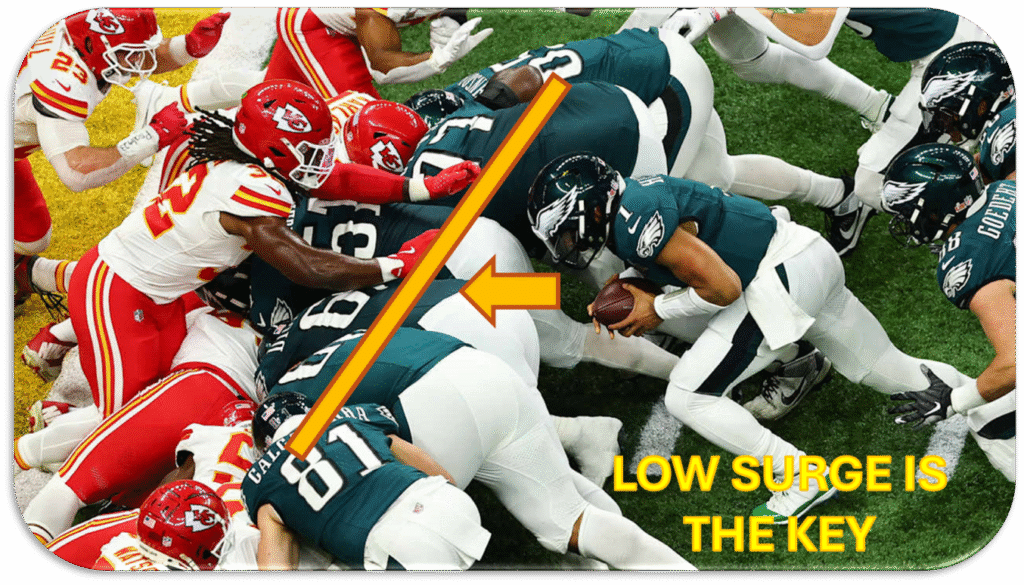
Rise of the Controversy
The remarkable success rate of the “Tush Push” at the goal line and for 1st down conversions has generated detractors. Many feel that the excessive usage of this tactic is not what the 2006 rule change intended. Efforts to change the ruling to ban the play have escalated to league meetings, media talking points, and fan/player commentary.
- League owners meeting in 2025 –> Voted on a proposal to ban it, but the measure failed by just two votes of the needed supermajority.
- Many media commentators –> Call it “not a football play,” “like a scrum,” or argued it gives too much advantage and skirts the spirit of fairness.
- Safety concerns are raised –> Big bodies pushing into the pile, potential injuries, especially to QBs.
- Inconsistent Enforcement –> Many players, coaches, media members, and fans claim that the Eagles’ offensive linemen regularly commit a false start, gaining an illegal advantage… but due to the crowd of bodies at the line of scrimmage, the referees cannot adequately enforce false starts.
The angst has re-erupted due to the Philadelphia Eagles using the “Tush Push” in 4 consecutive plays, from just outside the NY Giants’ 3-yard line in last night’s Thursday Night game.
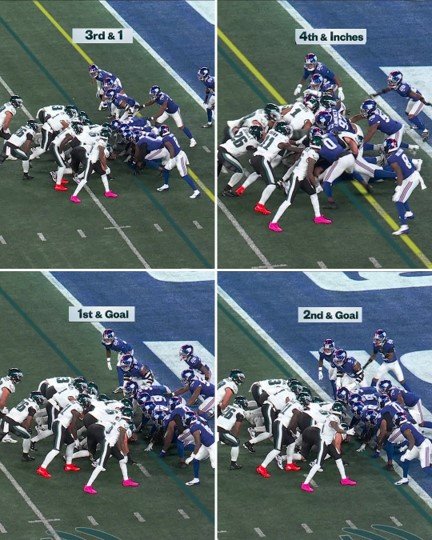
Under the Microscope
It has become a new convention to isolate “Tush Push” plays on super slow motion and scrutinize the quality of the officiating for calling false starts.
- The NFL has admitted that there have been missed false start(s) during the Eagles’ Tush Push plays.
- The league has told officials to enforce short-yardage plays, particularly the Tush Push, more “tight.”
- Leading to media analysts and social media accounts pointing to slow-motion replays showing early movement by Eagles’ linemen.
To me, this looks like a heavy dose of confirmation bias. No one is scrutinizing other types of QB sneaks at the goal line. No one is watching 960 frames per second (fps) to spot if a lineman is flinching early other such plays. This leaves out important observations that would help compare and contrast if enforcement issues are unique to the “Tush Push” or if there is a more widespread issue on tight calls.
The basis of these super slow-motion clips is from the NFL is using xMo cameras with 960 fps; with some Phantom models reaching thousands of fps.
Why it matters:
- At 960 fps, each frame captures ~1 millisecond of action.
- The SMPTE Motion Imaging Journal tells us that humans can only perceive motion up to ~50–90 fps, meaning these cameras show 10–15x more detail than our eyes can distinguish.
- Humans don’t see in frames but have a temporal resolution limit.
- Average: ~50–60 fps
- Trained observers: ~70–90 fps
- Beyond 100 fps: motion appears continuous
SOURCE: Watson, A. B. (2013). High frame rates and human vision: A view through the window of visibility. SMPTE Motion Imaging Journal, 122(2), 18–32.
The point of all this is to say… what we are seeing in the slow-motion footage is cherry-picked plays that do not prove if there is poor officiating for just related to the “Tush Push.” Fans need to stop pretending that this is an Eagles and “Tush Push” problem.
Super slow-mo cameras exaggerate tiny timing differences, like micro-flinches that occur in 1–2 milliseconds. These micro-movements are imperceptible in real time, which is why officials rarely call them. What looks like a “missed” call for a false start is just sub-frame timing variance, which the human eye cannot perceive so it is effectively a simultaneous action at game speed.
The Bigger Picture
The “Tush Push” exemplifies the NFL’s ongoing evolution of rules, technology, and strategy. What began as a century-old prohibition against “helping the runner” has become a highly effective, legal football tactic (at least for one team). Modern camera technology and replay scrutiny allow fans and analysts to dissect each frame, whereas human perception and the reality of officiating remind us that some details exist only on film. That side of the controversy needs to be set aside so we can take a real look at the rules and determine if a reversal of the 2006 decision is truly needed.
That’s what this boils down to. Not phantom false starts… not allegations of unfair officiating… just whether or not the NFL believes that the “Tush Push” is a manipulation of the rules that were intended for another purpose entirely.
I personally believe that it’s a fine play, but I won’t lose sleep if the rules are changed to ban it. I understand the reasons for the dislike, and I see the value of it as a legitimate play. At this point, I’m confident that there will be an off-season decision to ban the play for the 2026 season. It would be easy enough to do without bringing back the “dead letter” situation that the NFL originally sought to eliminate in 2006.
State that “… it’s illegal to push the ball-carrier while the ball is behind the line of scrimmage.” I suppose if this brings an end to the excessive debate and the incessant fixation on movement within fractions of second, then it will be worth the ruling… says me 😉


